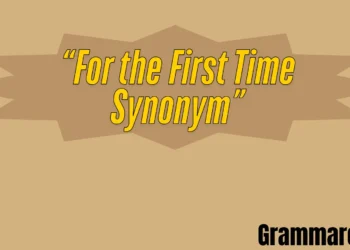It is very important to understand the difference between ‘monkeys,Monkies or Monkeys. These three forms are used for specificity –monkey’s indicates that only one monkey owns the item, monkeys’ means many different monkeys own it all together, and finally “monkeys”, is just a regular plural version of this word with no association to possession at all. Understanding this short description will allow you to use these terms correctly and improve the purposefulness of what you want to express.
English possessives can be difficult to employ because it is easy for even native speakers to confuse singular and plural possessive forms. Breakdown Of The Monkey Grammar RulesSo you started to hear a bit of this different use of monkey language and you want the answers, right?
Possessive Nouns with Monkeys A Comprehension
Possessive nouns speak to the idea of ownership —whether it be an object belonging to a person or a thing. A simple apostrophe in grammar can change the meaning of one sentence utterly. Understanding these minute variations is especially significant for professionals such as zookeepers or those involved in primate research who need to convey their observations correctly and unequivocally.
Singular Possession: Monkey’s
The word monkey signifies something that belongs to one monkey. Examples include:
- “A monkey’s tail helps it maintain balance.”
- “The monkey’s habitat is found deep in the rainforest.”
Contextual Use: A zookeeper might say, “This monkey’s climbing skills are exceptional.” In this case, the statement refers specifically to one monkey and its abilities.
Plural Possession: Monkeys’
On the other hand, monkeys show possession by more than one monkey. Examples:
- “Monkeys’ diets vary depending on their environment.”
- “Scientists observed changes in the monkeys’ group dynamics.”
Scenario: A field biologist may remark, “The monkeys’ vocalizations are surprisingly sophisticated,” referring to behavior shared by a group of monkeys.
Plural Without Possession: Monkeys
When you write monkeys without an apostrophe, you’re simply referring to more than one monkey—no ownership implied. For instance:
- “Monkeys travel in troops through the forest canopy.”
- “Dozens of monkeys gathered around the feeding site.”
This is just the regular plural form, not indicating that anything belongs to them.
Uses in Practice — Real-world Examples
- Researchers and wildlife professionals who focus on animals know that this distinction isn’t just semantics; it’s fundamental to clarity.
- One Curse: “The monkey’s tail aids its balance when it leaps from branch to branch.
- Multiple Monkeys’ Shared Behavior: “The monkeys’ playful antics fascinated the students.”
Such precision ensures scientific writing and discussions remain specific and understandable.
Common Errors to Watch For
The forms are very easy to get confused, especially when writing quickly. Common Errors — A Guide on What NOT to do!
- Plural possessive That is NOT the same as monkey’s (singular possessive)
- Make sure you know if the reference is to a single or multiple monkeys.
- Always read your sentence in full to see if it logically refers to ownership.
Why These Distinctions Matter
In scientific fields, unclear possessive use can lead to misinterpretations. However, more ambiguity arises when talking about our examples: For example if you were a behavioral ecologist studying how monkeys in the same group allocate their time amongst different activities.
Being grammatically accurate also leverages that outcomes and interpretations are expressed in the best way possible.
Helpful Tips for Getting It Right
- Read your sentences out loud to hear if they make sense.
- Ask yourself: Am I referring to one monkey or many?
- Determine if the noun is showing possession or just a group.
- Break down complex sentences to isolate the owner and what is owned.
The Short History of the Possessive Apostrophe
From the 16th century, it was slowly replacing older grammatical regiment fixtures . This tiny dot (or overline), now wielded massive power in how we convey possession. Linguists, interestingly, equate this grammatical development to how primates convey ownership or claim over an area by signs and signals — a further reminder of our evolutionary ties concerning communication.
More Examples for Clarity
Singular Possessive:
- “A monkey’s intelligence can be tested through puzzles.”
- “The monkey’s shelter is built in high tree branches.”
- “That monkey’s curiosity leads it to explore tools.”
Plural Possessive:
- “The monkeys’ hierarchy is shaped by dominance and age.”
- “All the monkeys’ interactions are logged in the report.”
- “Zoologists observed the monkeys’ grooming behavior as a social tool.”
How Monkeys Express Ownership in Nature

Unlike humans, monkeys and other primates don’t use language to show ownership. Instead, they rely on:
- Physical proximity to objects
- Protective or possessive behavior
- Marking areas or items through scent or touch
- Social dominance to establish a claim
These signals serve the same function as human grammar—indicating something belongs to someone.
Human vs. Primate Possession
Comparative research has revealed that the language is used by human beings and through words, they clarify who the owner is, and that, primates use more natural predictive signals. Observe:
- Humans have (statements) such as “This is my property” and “The child’s toy.”
- A monkey could either be hugging an object tightly or trying to stop others from taking it.
- There are higher apes that are only found in the deepest jungles of Africa, which have an improved sense of possession to the extent that they can use mnemonic devices and kinship to lay claim to their belongings or decisions of what to eat.
Exploring the Complexity and Charm of Possessive Forms
Widespread Misunderstandings
The forms of possession in English are seldom confusing to learners and native speakers. This confusion typically arises from:
- Irregular rule application
- Exceptions that contradict expectations
- Context-dependent usage that alters meaning
Example Clarifications:
- Incorrect: “The monkeys tail”
- Correct (singular): “The monkey’s tail”
- Correct (plural): “The monkeys’ tails”
Knowing where to place the apostrophe is essential to accurately convey ownership and prevent misinterpretation.
The Psychology of Grammar
Linguists and cognitive scientists have explored how grammar connects with mental development. Understanding possessives tap into:
- Cognitive growth – the brain’s capacity to handle nuanced structures
- Language learning – especially how children internalize complex grammar
- Ownership awareness – a basic yet powerful human cognitive function
The mastery of possessive forms turns out to be more than a grammar practice because it shows how we arrange our ideas of belonging and a relationship in our mental way.
Fun and Engaging Learning Techniques
Learning about grammar is not necessarily a boring activity, and this can be achieved merely with the aid of different approaches. Indeed, the latter can help the pupils get a grasp on the details of various concepts far better than regular recitation. One of the most effective ways to keep learning fun is to turn a lesson into a game or physical activity.
- Creative storytelling featuring characters and their possessions
- Interactive grammar games that reinforce correct usage
- Visual aids like infographics that illustrate ownership
Turning grammar into a creative activity can help learners better grasp abstract concepts in a fun and lasting way.
Lessons from the Animal World
Animal behavior, especially among primates, offers fascinating parallels to human language and communication:
- Both species rely on rich signaling systems.
- Animals express ownership through behaviors like guarding or staying close to objects.
- Contextual interpretation helps both humans and animals understand the intention.
These insights remind us that possession isn’t just linguistic—it’s deeply tied to how beings communicate and relate.
Practical Tips for Mastery
Simple Strategies to Improve Possessive Use
To navigate possessive grammar confidently, consider these steps:
- Clarify how many owners you’re referring to
- Determine context: Is it singular or plural?
- Practice regularly with real-world examples.
- Pay attention to natural language use in media and conversations.
- Read often to absorb correct forms through exposure
- Persistence and mindfulness can over time make it look natural to use the possessive form.
Use the Power of Technologies for More Effective Learning
New learning technologies can make the learning of grammar easy and efficient.
- Software for Grammar checking instantly helps in identifying mistakes and also makes suggestions for changes.
- Game-based learning tools help revise in a fun and engaging way.
- Translation and feedback software explain grammar on the spot.
These resources reduce frustration and accelerate understanding, especially for tricky rules like possessives.
FAQs
1. What does “monkey’s” mean and how is it different from “monkeys’”?
‘Monkey’s’ means that it is related to one monkey (singular possessive).
Example: “The monkey’s tail is long.”
‘Monkeys’ indicates the possession of more than one monkey (plural possessive).
Example: “The monkeys’ habitat is the jungle.”
2. In which situation “monkeys” are not accompanied by an apostrophe?
When talking about more than one monkey, without the need to represent possession, use only “monkeys” and no apostrophe.
Example: “We saw many monkeys at the zoo.”
3. Is “monkeys’s” ever correct?
No, “monkeys’s” is not a standard form in English. Once a noun is plural and ends in -s, you only need to add an apostrophe after the s to make it possessive: monkeys’.
4. Are these rules subject to any exceptions?
The English language has a few particularities (especially in names and irregular plurals), where however the general principles root in ‘s and s’ are valid. The context usually makes things clear.
5. What is the significance of possessive grammar knowledge?
It’s not only grammar because the usage of possessive forms also facilitates the message’s clarity. They represent the connection between elements (ownership, belonging, connection) that are key even in writing, teaching, science, and storytelling.
Conclusion
Language is a living, ever-changing system—abound with fine nuances, great unpredictability as well as oh-so-rich possibilities. In writing, possessive forms are only one example but a very important one indeed of how we manifest linkage, ownership, and transparentness perfectly in our message.
The task of your communication from the very point of naming the monkey’s tail to understanding the monkey’s social behavior becomes very easy if you can use the possessive forms correctly as they give you the power to be precise in your message.
- Promoting clearer expression
- Deepening conceptual understanding
- Building bridges between people—and even species
Mastering these fine points in grammar isn’t just useful—it’s part of the joy of becoming a confident and articulate communicator.








